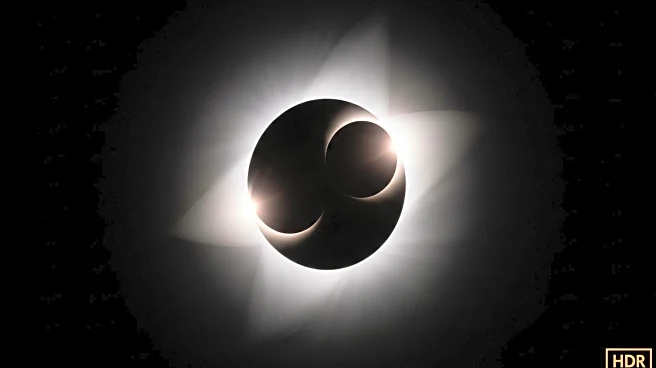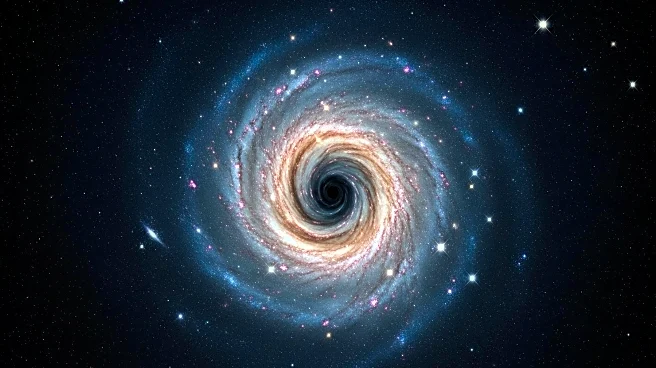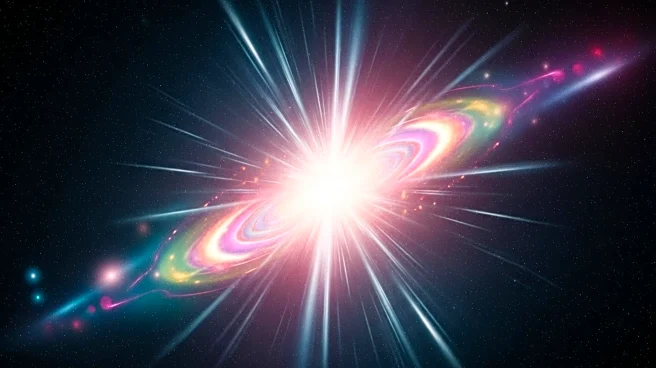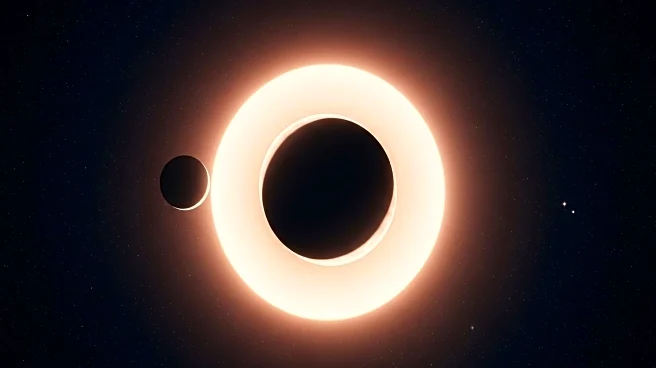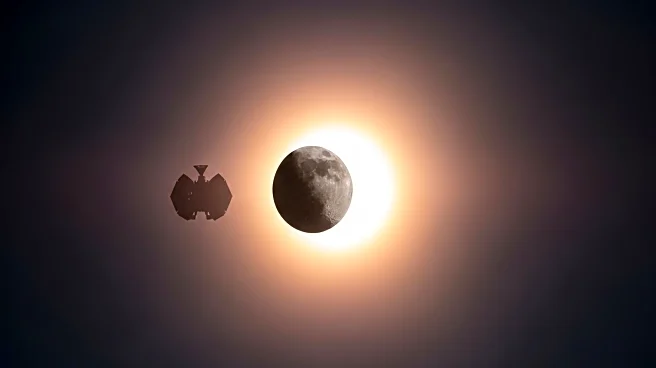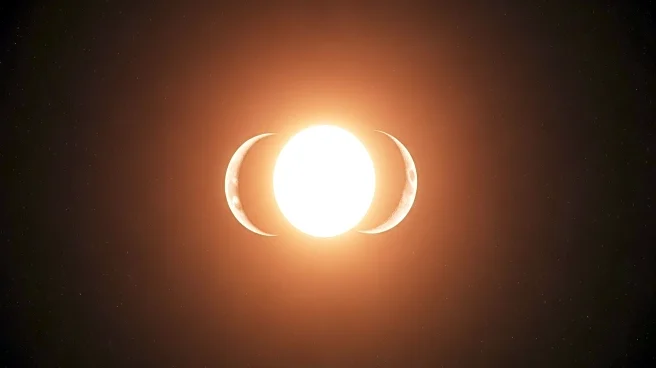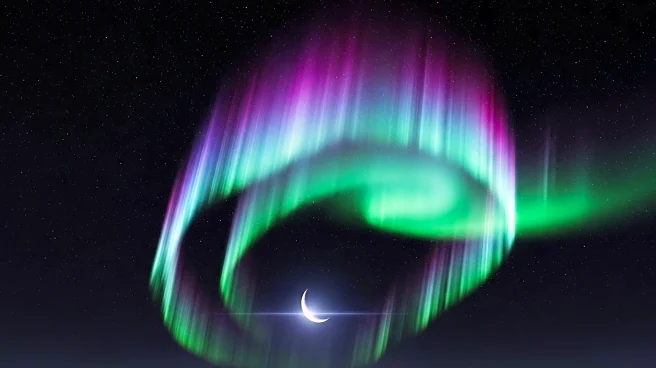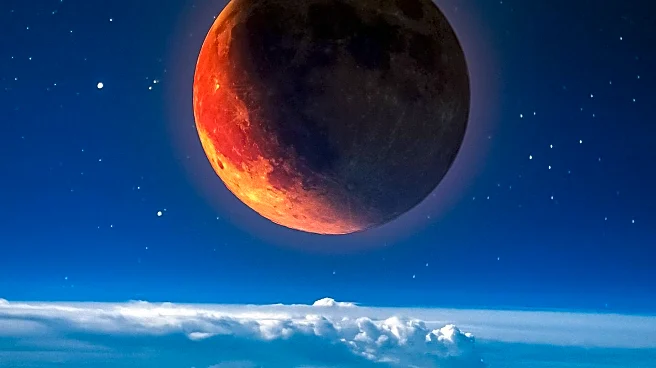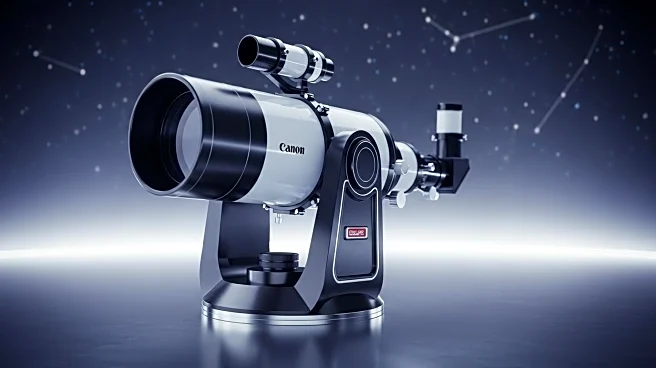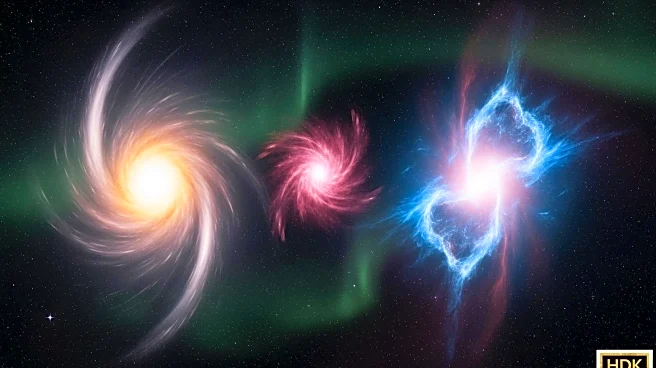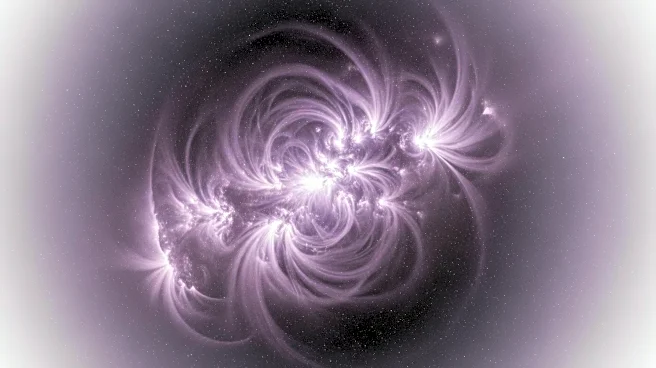What is the story about?
What's Happening?
The National Oceanic and Atmospheric Administration (NOAA) has captured a remarkable image using its Compact Coronagraph-1 (CCOR-1) telescope, which is attached to the GOES-19 satellite. This image shows the Moon crossing directly in front of the Sun, a phenomenon made possible by the coronagraph's ability to mimic a solar eclipse by blocking out most sunlight. This allows researchers to study the Sun's corona, the outer layer of light that is typically difficult to observe. The Moon appears fully illuminated in the image due to Earthshine, which is sunlight reflected from Earth onto the lunar surface. The CCOR-1, being the closest coronagraph to Earth, occasionally captures the Moon in its field of view. This event underscores the importance of monitoring space weather, as coronal mass ejections (CMEs) can disrupt satellites, power grids, and GPS navigation systems.
Why It's Important?
The ability to monitor space weather is crucial for maintaining the functionality of satellite systems and infrastructure on Earth. Coronal mass ejections (CMEs) can have significant impacts, potentially disrupting communication networks, navigation tools, and power grids. The image captured by NOAA's CCOR-1 telescope not only serves as a stunning visual but also highlights the ongoing efforts to study and predict space weather events. By understanding the dynamics of the Sun's corona, scientists can better anticipate and mitigate the effects of solar activity on Earth. This research is vital for industries reliant on satellite technology, including telecommunications, aviation, and national security.
What's Next?
Continued advancements in satellite technology and coronagraph instruments are expected to enhance the monitoring of space weather phenomena. NOAA and other agencies will likely focus on improving predictive models for solar activity, aiming to provide more accurate forecasts and warnings for potential disruptions. Collaboration between international space agencies may also increase, as understanding space weather is a global concern. Future developments could include more sophisticated imaging techniques and expanded satellite networks to cover a broader range of solar observations.
Beyond the Headlines
The capture of such images not only contributes to scientific research but also raises public awareness about the importance of space weather monitoring. It highlights the intersection of art and science, as these images can inspire interest and curiosity about the universe. Additionally, the study of space weather has ethical implications, as it involves the protection of critical infrastructure and the safety of populations dependent on technology. Long-term, this research could lead to innovations in satellite design and deployment, enhancing resilience against solar disruptions.
AI Generated Content
Do you find this article useful?
